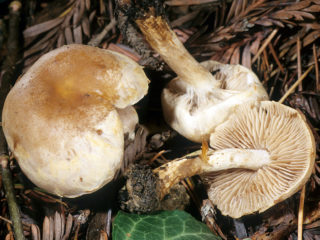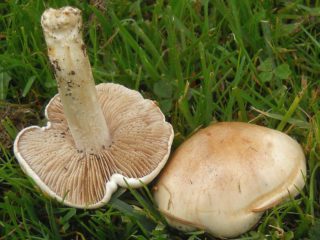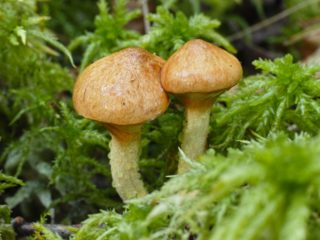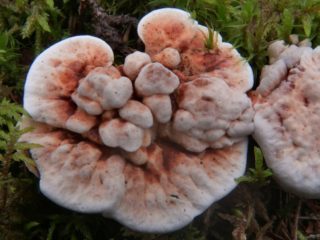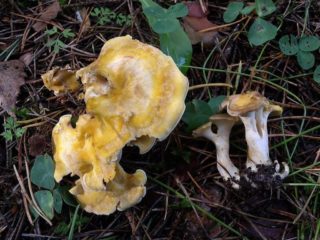Content
Hebeloma radicosum is a member of the Hebeloma genus of the Strophariaceae family. The mushroom is also popularly known as Hebeloma radicosum, rooting and rooted. It is considered one of the most beautiful representatives of the mushroom world. It got its name because of its long root, the size of which is sometimes equal to half the length of the stem. This characteristic feature makes it easily recognizable even to inexperienced mushroom pickers.
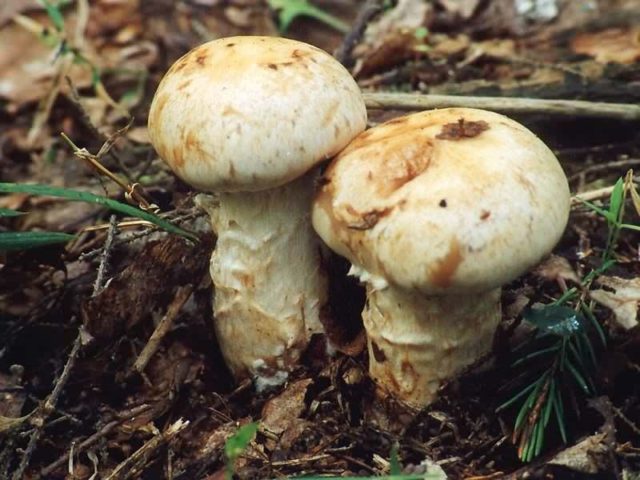
The mushroom has a long root
What does root hebeloma look like?
Hebeloma root is a large fleshy mushroom. The cap is large, about 7-15 cm in diameter. Covered with non-peeling reddish-brown scales.The characteristic convex shape of the cap does not change as the mushroom grows and remains until adulthood. The color is gray-brown, darker in the center, slightly lighter at the edges. Against the background of scales, the color of which is much darker than the main color of the cap, the mushroom looks “pockmarked”.
The surface of the cap is mostly slippery. It dries out a little during dry periods, leaving only a glossy sheen. In young specimens, remnants of the spathe may hang down the edges of the cap. The pulp is white, thick, dense, fleshy, with a pronounced bitter taste and a rather strong almond aroma.
The plates are hymenophora-frequent, thin, free or half-grown. When young they are light gray in color, when old they are brown-clay. The spores are medium sized, oval in shape, with a folded surface. The color of the powder is yellow-brown.
The stem of the root hebeloma is quite long - 10-20 cm, widening towards the base. Light gray in color, with dark scales that descend to the base as they grow.
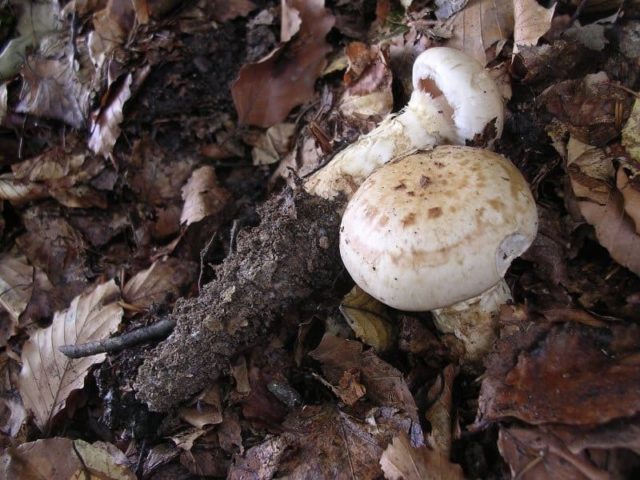
The leg is often curved, resembling a spindle
Where does hebeloma root grow?
Hebeloma root is mainly distributed in northern regions with temperate climates, but is quite rare. Grows in a variety of forest plantations, deciduous or mixed. Grows everywhere in large, noticeable groups. They form mycorrhizae with deciduous trees. Very often, rooting hebeloma takes a liking to places with damaged topsoil - holes, ditches, edges of roads and paths, areas near rodent burrows.
Fruiting lasts from August to October and stops with the first changes in temperature conditions. The appearance of mushrooms depends on weather conditions.Sometimes they may even have no mushroom season at all.
Is it possible to eat hebeloma root?
Hebeloma root belongs to the category of conditionally edible mushrooms, of little value in culinary terms. Belongs to category 4 nutritional value. The pulp has a specific smell and a rather bitter taste. It is impossible to get rid of bitterness using any processing method, so the mushroom is often not eaten.
Conclusion
Hebeloma root is a mushroom that is visually attractive, but has very low taste, which makes it inedible. The characteristic root shoot is a distinctive feature that makes it quite easy to recognize hebeloma rhizomata. Without complete confidence, you should not collect and eat mushrooms. All other outwardly similar hebelomas are poisonous and can lead to poisoning.


